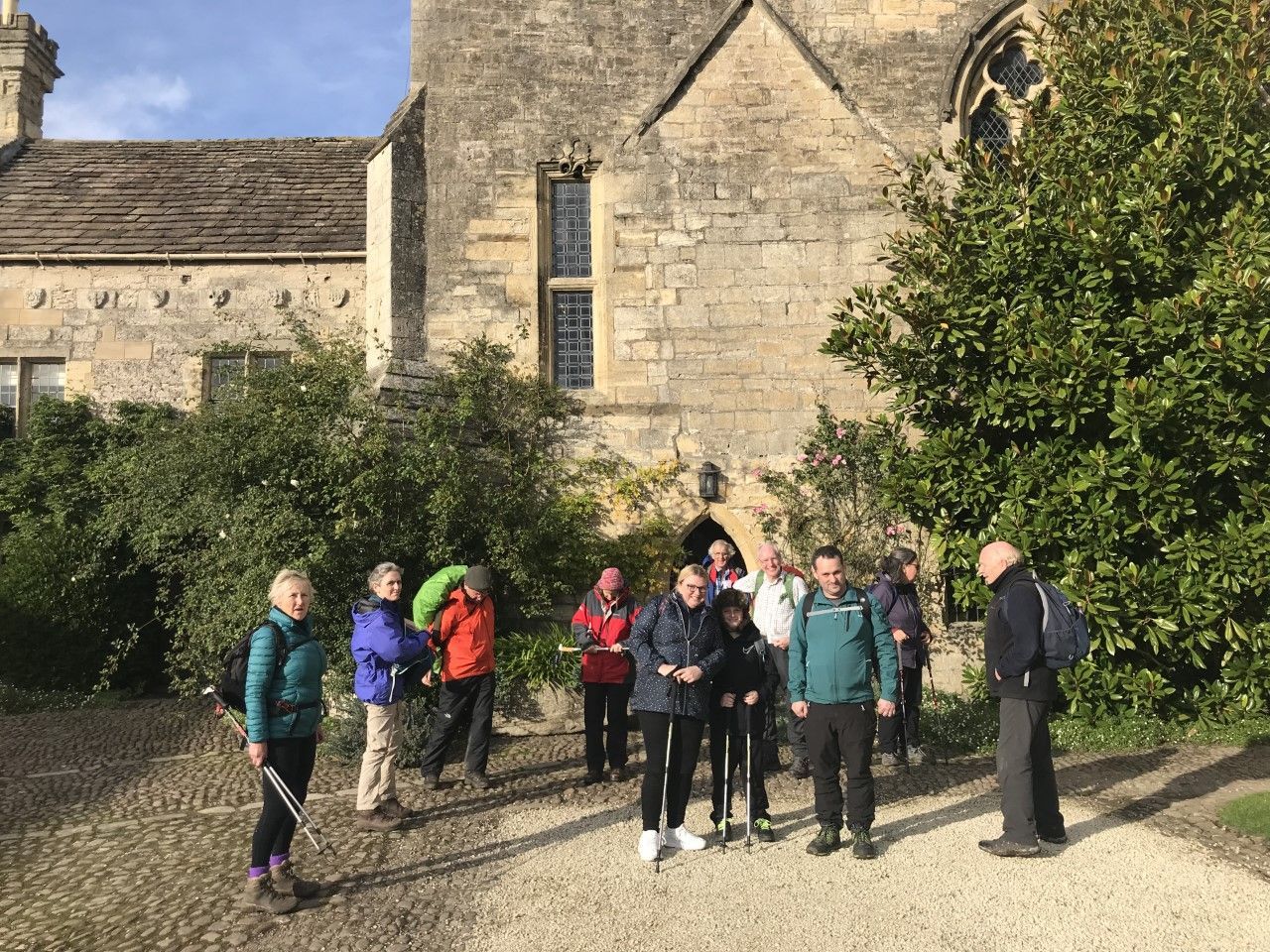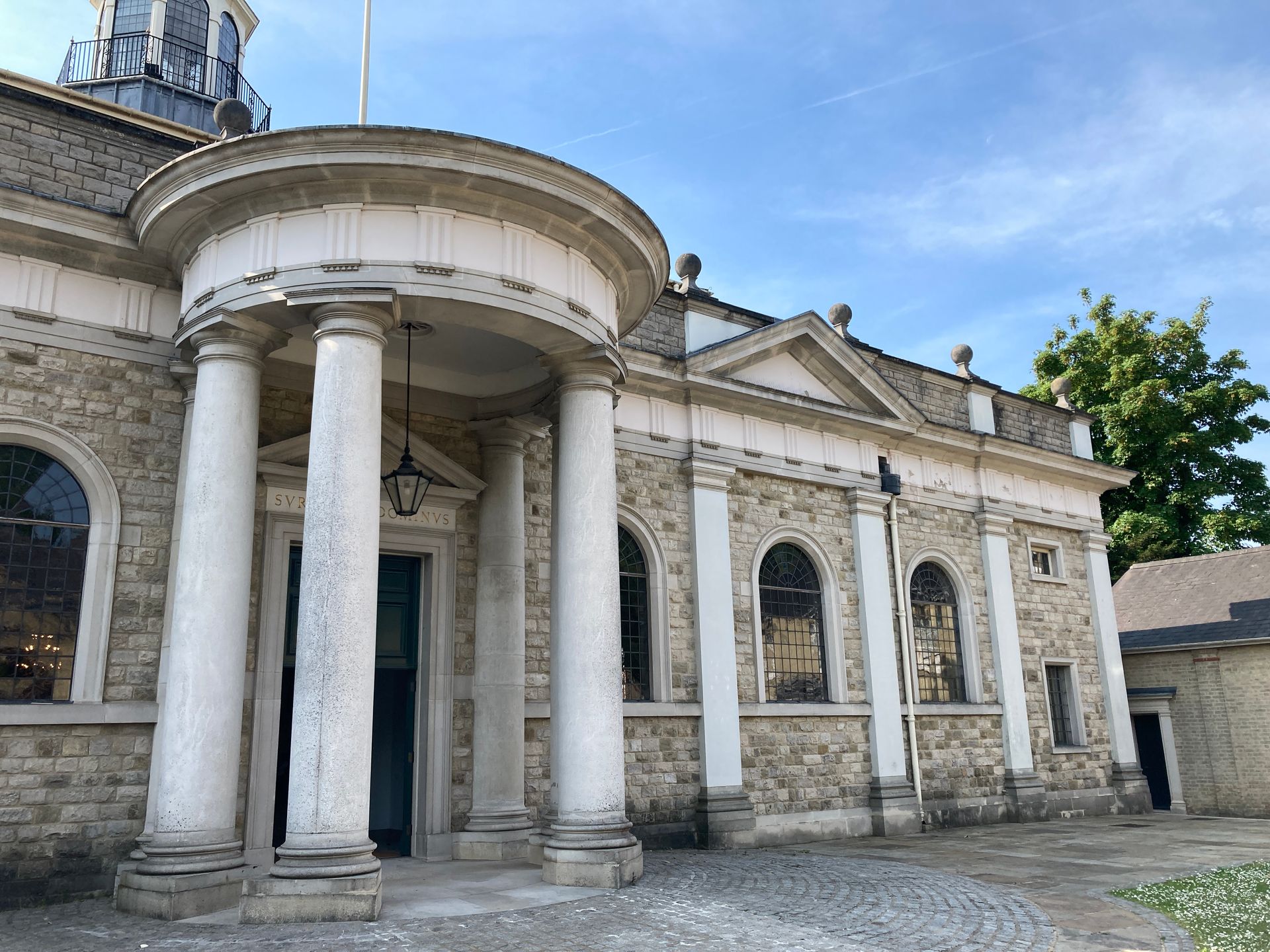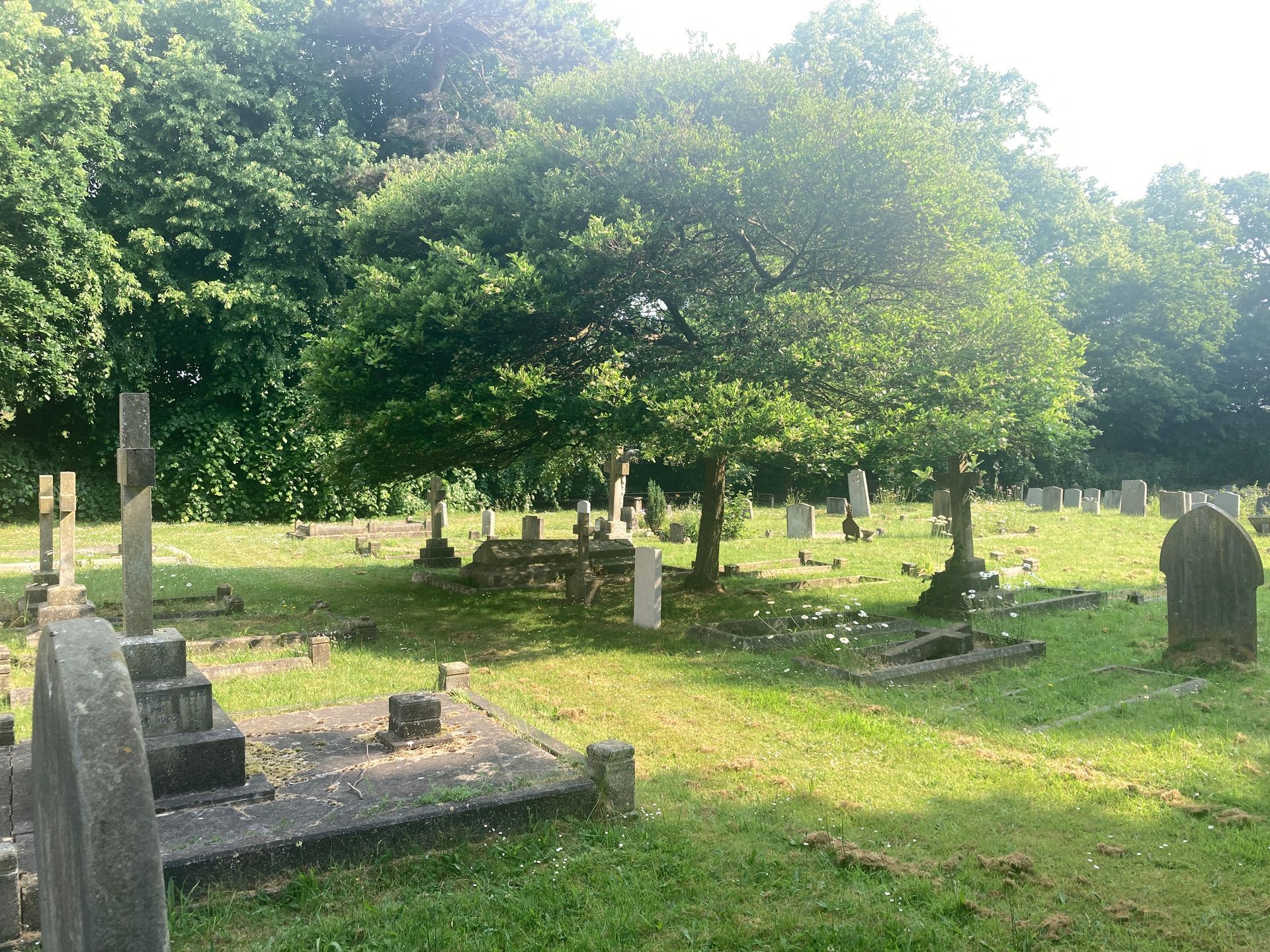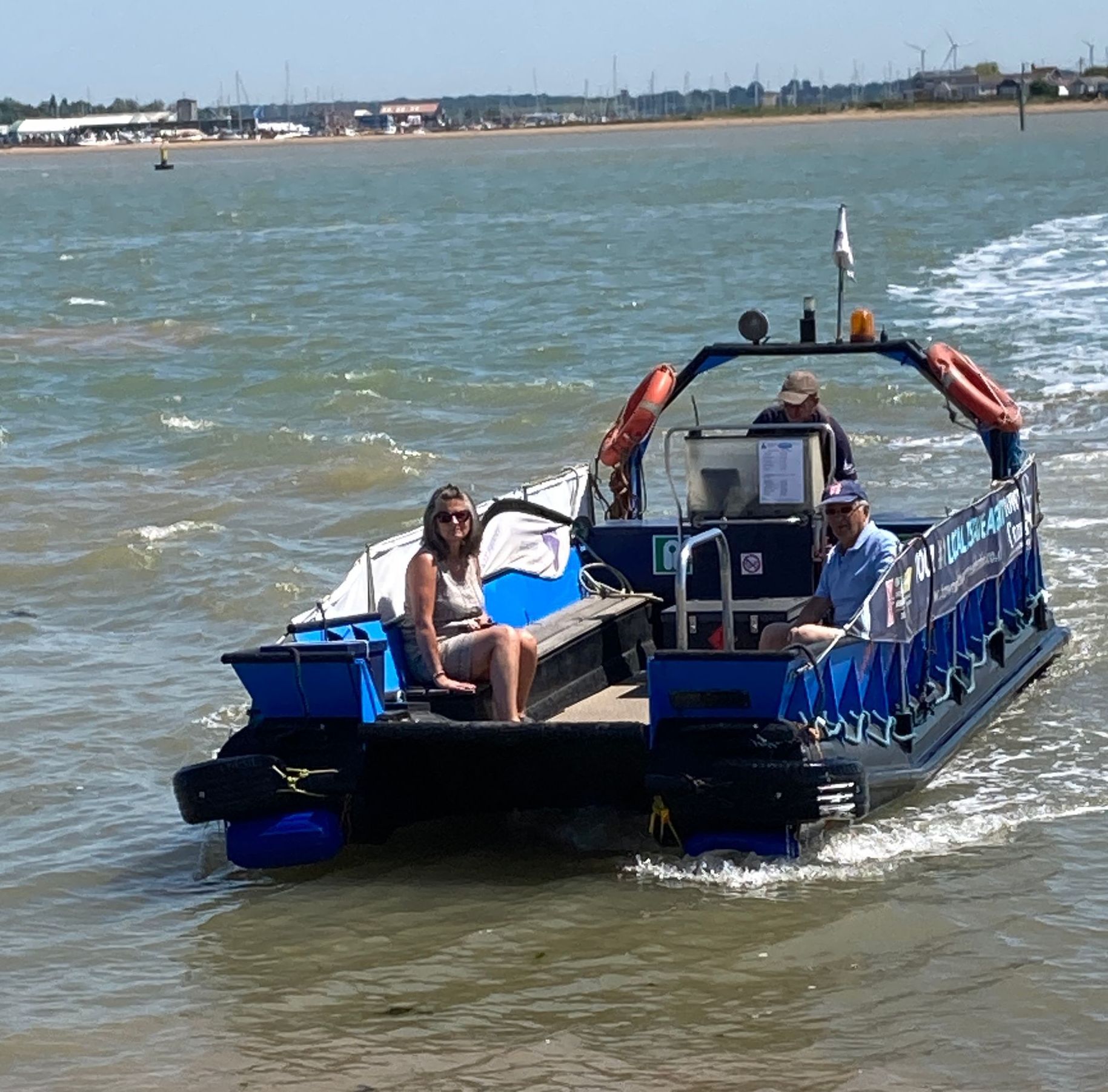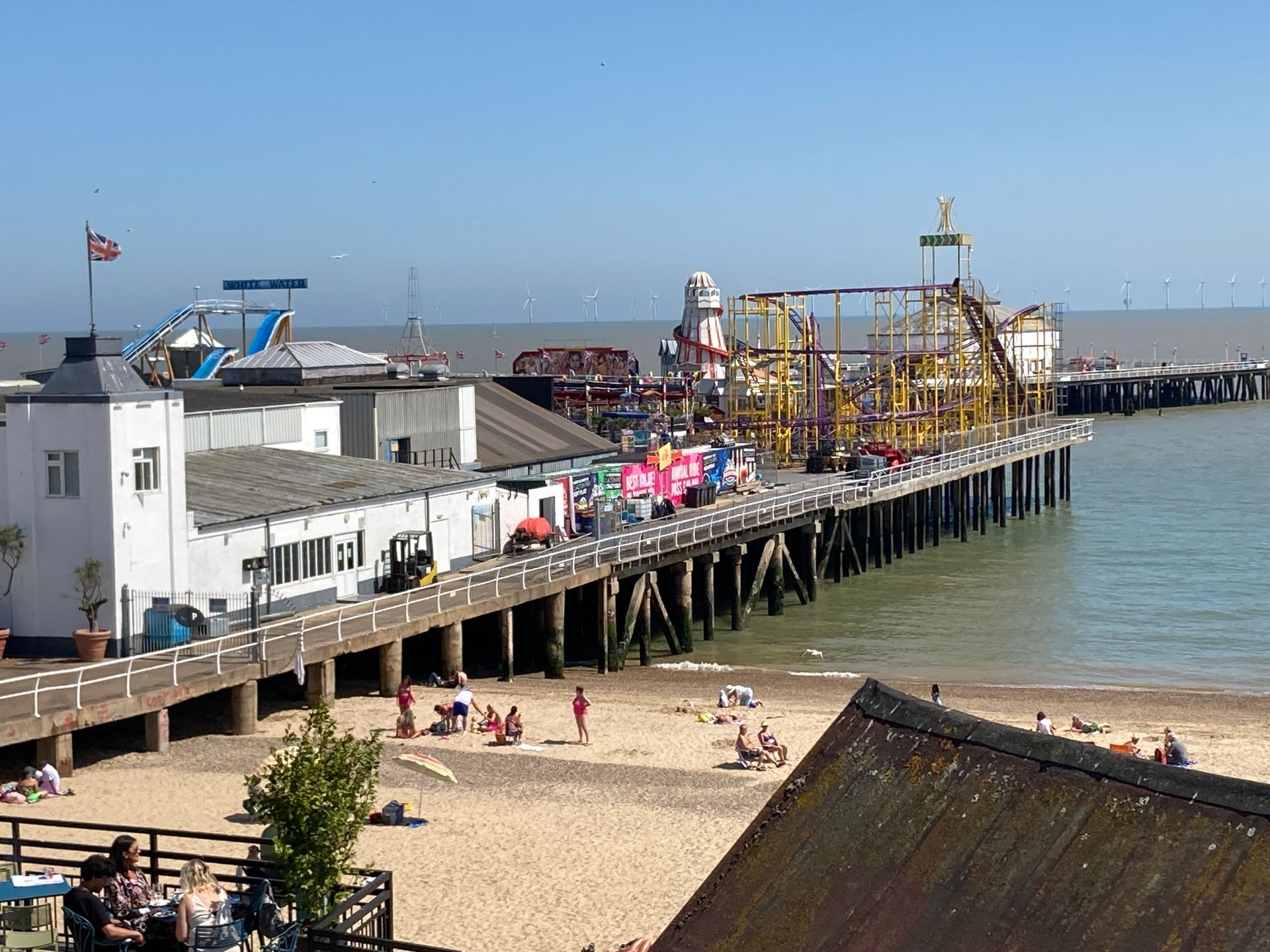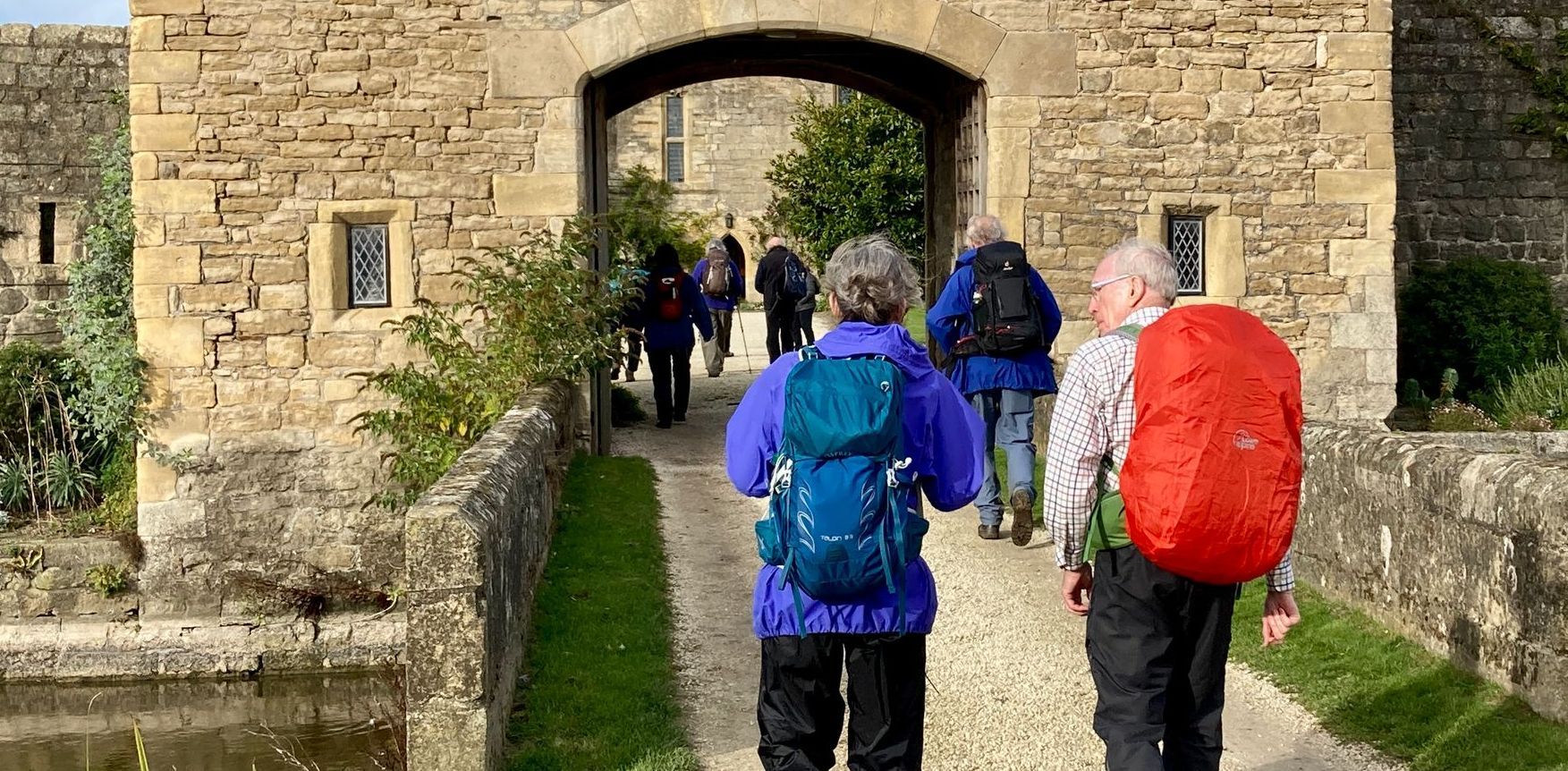The Way of Our Lady of Light
(Summer only)
A Pilgrim Way for the Diocese of Brentwood from the Cathedral of St Mary & St Helen in Brentwood to the Shrine of Our Lady of Light in Clacton-on-Sea
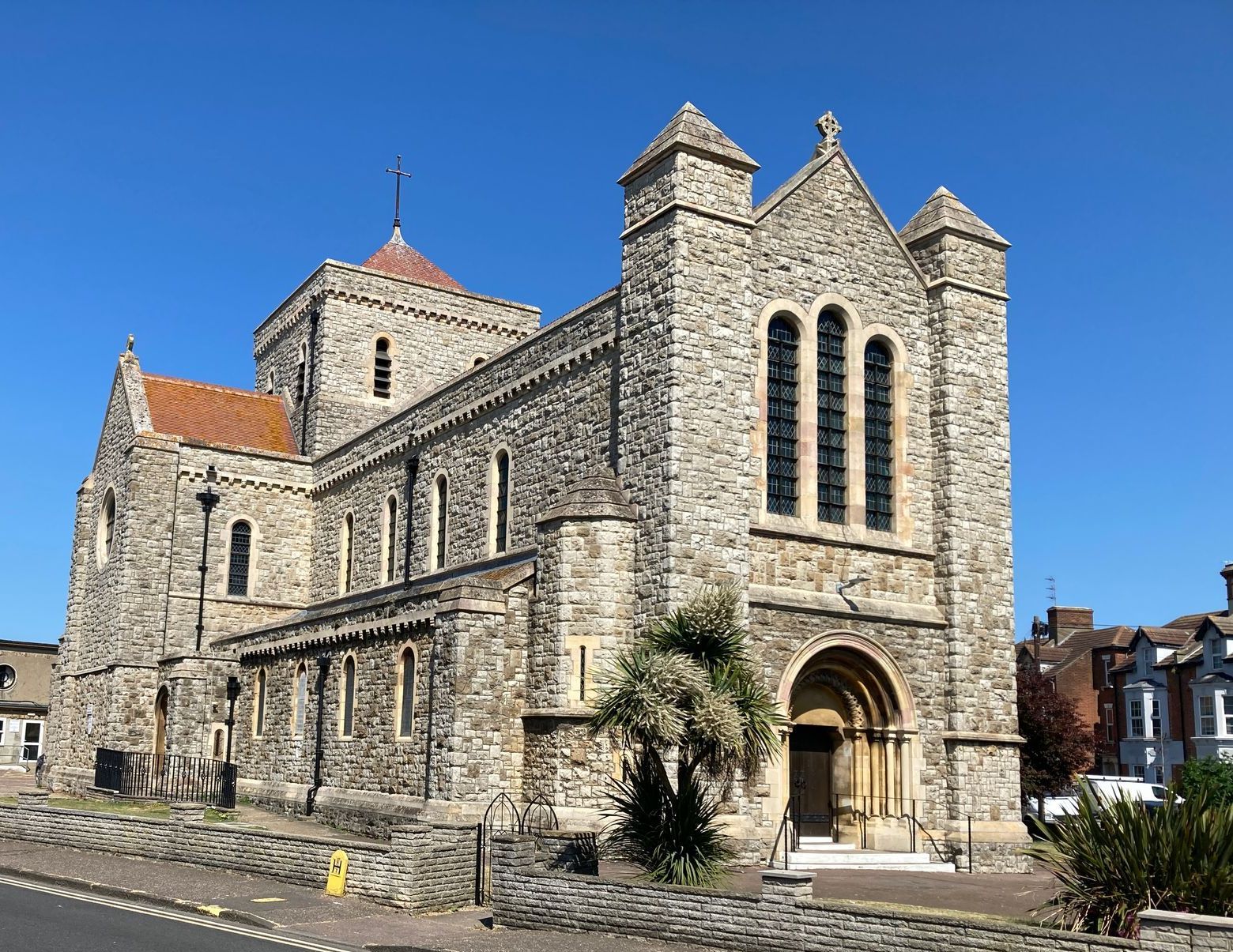
The Church of Our Lady of Light & St Osyth, Clacton-on-Sea
About the route
NB the route can only be used during summer when the ferries at Brightlingsea are working. In addition the causeway to West Mersea can be closed at some high tides. During the winter pilgrims can follow the waymarked St Peter's Way to Bradwell-on-Sea, where St Cedd landed in 653AD. Details here.
Devotion to Our Lady of Light started with a Jesuit, Fr Giovanni Genovesi, who was born in Sicily in 1684. He wanted a representation of the Our Lady to take with him to display as he preached. He asked the help of a devout woman who reported a vision of the Virgin bathed in a glorious light, surrounded by a host of seraphim. In the vision she told the woman that she wished to be called Mary Most Holy Mother of Light. A painter was found and after 1722 the resulting picture was carried by Fr Genovesi. The devotion spread and in 1736, Pope Clement XII authorized the veneration of Mary under this title. The original picture was destroyed when the Church of Casa Professa in Palermo was bombarded in 1943.
The Way leaves Brentwood and crosses farmland to reach the Catholic Church of St John the Evangelist and St Erconwald, Ingatestone and soon after the recusant house of Ingatestone Hall. It then turns east to Stock and passes the Catholic Church of Our Lady & St Joseph and soon joins the St Peter's Way.
From Stock the Way of Our Lady of Light takes a more northerly direction on the Saffron Way to the Church of the English Martyrs in Danbury. The Way then crosses gentle country to the Church of the Assumption of Our Lady at Maldon. The Way continues east along the English Coast path on the north of the River Blackwater before crossing marshland and a tidal causeway to reach the Church of St Cedd & St Gregory, West Mersea.
The Way follows the coast path and then a ferry to the Church of St Sabina at Brightlingsea. Another ferry takes pilgrims to St Clear and the path follows the estuary to the former Augustinian Priory of St Osyth, before a final stretch along the coast to the Church and Shrine of Our Lady of Light & St Osyth, Clacton-on-Sea.
You can find out more about the Way and download the GPX file by clicking on the LEARN MORE tab in the
interactive map below
Guidance
Using the tabs in this section you can find the information you need for your pilgrimage.
The Outer Way provides practical advice about the route.
The Inner Way describes the spiritual highlights.
Using the button below you can download details of the inner and outer ways and the walking guidance and maps,
Stages: route, food & drink, accomodation and transport
1. Brentwood Cathedral to Stock: 8.9 miles
The Cathedral can be reached by foot or bus from the railway station. The route is through suburbs and them quiet countryside to the village of Ingatestone, shortly afterwards passing Ingatestone Hall and then reaching Stock.
There are plenty of options for food, drink and accommodation in Brentwood. There are pubs and shops at Shenfield, Ingatestone and Stock. There are railway stations for trains back to Brentwood at Shenfield and Ingatestone. There are buses from Stock, although no direct route to Brentwood (see link below). Accommodation is available at an inn in Stock.
2. Stock to Danbury: 9.5 miles
The Way follows the waymarked St Peter’s Way as far as East Hanningfield and then veers north along the Saffron Way to Danbury. The route is gentle through pretty countryside and villages.
There are pubs at West Hanningfield, East Hanningfield and Danbury and shops in Danbury. There are bus stops in the above villages. There may be Airbnb accommodation in Danbury.
3. Danbury to Maldon: 5.7 miles
The Way passes a golf course and farmland. There are two pubs in Woodham Walter. Maldon has shops, pubs and accommodation. There are buses in Maldon but no coaches or railway station.
4. Maldon to Tollesbury: 13.3 miles
The path follows the Chelmer & Blackwater Navigation, then the River Blackwater along the England Coast Path. Finally a track takes you inland to Tollesbury.
There are 2 pubs and a café beside the lock at Heybridge Basin and a pub in Tollesbury. There are basic shops in Tollesbury, a fish & chips van visits and it is possible to order takeaway food and eat it in the pub. There is Airbnb accommodation in Tollesbury and a limited bus service.
5. Tollesbury to West Mersea: 11.9 miles
NB Before setting off check the tide times for the Strood causeway. The route is north beside creeks to Salcott. The path then crosses quiet countryside but after Peldon it reaches salt marsh again to the causeway. After a stretch of busy road the Way reaches West Mersea.
There is a pub at Peldon and pubs, shops and accommodation in West Mersea. There are buses.
6. West Mersea to Brightlingsea: 7.2 miles including 0.8 miles ferry crossing
NB Book your ferry from East Mersea to Brightlingsea in advance. From West Mersea the Way follows the Coast path until, just after a youth camp it turns inland. It follows quiet lanes and tracks to reach the ferry boarding point.
There is a pub in East Mersea and pubs, shops, accommodation and buses in Brightlingsea.
7. Brightlingsea to Clacton on Sea: 11.8 miles including 0.2 miles ferry crossing
NB Book your ferry from Brightlingsea to Point Clear in advance. From Point Clear the Way follows creeks to St Osyth. From here the path leads south across farmland to reach the coast, which it follows all the way to Clacton-on-Sea.
There is a pub, shops and buses in St Osyth, a shop and bar in Seawick Holiday Park, and all facilities in Clacton-on-Sea, including a railway station.
Public transport links
Trains:
https://www.nationalrail.co.uk/
Coaches:
https://www.nationalexpress.com/en
Buses:
Pilgrim people and places
Cathedral of St Mary & St Helen
The Cathedral is the first Classical cathedral to be built in England since Wren’s St Paul’s. It was originally a neo-Gothic mission church built in the 1860s and raised to cathedral status in 1917. It was considerably enlarged in the 1970s, but this addition was replaced in 1989-91 with a neo-Classical extension designed by Quinlan Terry, inspired by the early Italian Renaissance fused with the English Baroque of Sir Christopher Wren. Clear windows on all 4 sides mean that the cathedral is flooded with light at any time of the day giving an uplifting effect. There is a central altar designed for maximum congregational participation, in keeping with the liturgical reforms of Vatican II. The rebuilt Cathedral was opened in May 1991 and in 2022 was listed as a Grade II giving it the national status of a ‘particularly important building of more than special interest’. The surrounding complex includes the original church and house of the 1830s and a former convent building of the 1870s, also remodelled by Terry and landscaped to contribute to the Brentwood town centre conservation area.
Church of St John the Evangelist and St Erconwald, Ingatestone
This is a 1930s neo-Tudor brick church reflecting the design of nearby Ingatestone Hall, home of the recusant Petre family. The Hall’s chapel served the oldest mission in the Diocese. The current church has several memorials to members of the Petre family and contains furnishings from the Hall chapel. There are stained-glass windows by Reginald Hallward, and Morris & Co. St Erconwald was born in Lincolnshire. In 675 he became the Bishop of London and was an important contributor to the reconversion of Essex. He is credited with a large role in the evolution of Anglo-Saxon charters. He died at Barking Abbey in 693 and is a patron of the Diocese of Brentwood.
Ingatestone Hall is a 16th-century manor house built by Sir William Petre. In June 1561, Queen Elizabeth I spent several nights at Ingatestone Hall on her royal progress. The Petre family were recusants, remaining loyal to the Catholic Church after the English Reformation. The family had to worship in secret, holding clandestine Masses in the chapel at Ingatestone Hall. The first Baron Petre, Sir John Petre, befriended the composer William Byrd, also a Catholic. Byrd composed a comprehensive repertory of choral music to be sung in the private chapels at Ingatestone and nearby Thorndon Hall, the other Petre family property. Works first heard at Ingatestone are now considered to be some of the finest examples of Tudor music. Several Catholic priests were sheltered at Ingatestone, amongst them St. John Payne, who was executed in 1582. The hall contains two priest holes. The Petre family still live the house and it is open to the public on some afternoons between Easter and September.
Church of Our Lady & St Joseph, Stock
A mission was founded in in Stock in 1744, served by Jesuits priests at nearby Crondon Park, home of the Catholic Mason family. In 1852 a chapel was opened at Lilystone Hall, which had been acquired by the Catholic Gillow family. In 1890-91 the present church was built as St Joseph’s School from designs by Peter Paul Pugin. In 1936 the Lilystone Hall chapel was closed, and the school converted to use as a church. It contains several furnishings from the chapel at the Hall.
Church of the English Martyrs, Danbury
Until 1961 Danbury was served by the Diocesan Travelling Mission, with Mass said at various locations around the village. In 1954 Miss Mary Brown bought a property in Maldon Road and donated part of the garden to the Diocese. A simple church seating 156 people was opened in December 1961 and in 1963 Danbury was erected as a parish. In 1999-2003 the church was repaired and upgraded, with new windows, entrance porch and improved disabled access.
Church of the Assumption of Our Lady, Maldon
The first Catholic place of worship in Maldon in modern times was opened in 1865, a second in 1890 and a third in 1897. The first resident priest was appointed in 1900 and the church was enlarged or rebuilt in 1906, this building is now the parish hall. The parish of Maldon was erected in 1918, and the present church built in 1924-25 in the late Gothic Revival style with a red brick exterior and an attractive wagon-roofed interior.
Church of St Cedd & St Gregory, West Mersea
The Church is a chapel-of-ease, served from St James the Less, Colchester. A Mass centre was established on Mersea Island in 1949, and the present church opened in 1962. It was designed by unidentified architects as a dual-purpose church and hall. St Cedd, c. 620 – 664, was an Anglo-Saxon monk and bishop. He landed at Bradwell in Essex on his mission to the Middle Angles and East Saxons. He was a significant participant in the Synod of Whitby. St Gregory the Great was Pope from 590 to his death in 604. He initiated the mission to convert the Anglo-Saxons and improved the welfare of the people of Rome. He revised the liturgy and is a Doctor of the Church.
Church of St Sabina, Brightlingsea
A Mass centre was established at Brightlingsea in about 1904. During the First World War, Mass was said by an army chaplain in the New Church Schoolroom, Queen Street, but afterwards continued at various locations around the town until the present Church was opened in 1958. St Sabina was a second century Roman martyr and the name of the late wife of the donor of the site. The parish was erected in 1964. Although the building is modest the entrance elevation is said to be reminiscent of a Greek temple front! Inside there is a simple but handsome marble altar, the gift of a relocating religious community.
St Osyth's Priory, later Abbey, was founded in the C12 as a community of Augustinian canons and became one of the largest religious houses in Essex. It was dedicated to SS Peter & Paul as well as St Osyth, a royal saint and virgin martyr. The first prior was William de Corbeil, who was elected Archbishop of Canterbury in 1123 and crowned King Stephen in 1135. At the Suppression of the Monasteries in 1539 the prior and 16 canons were evicted. Henry VIII gave the Abbey and its estate to Thomas Cromwell, but on his fall from favour, it returned to crown possession until it was sold under the reign of Edward VI. The C15 gatehouse still stands. In 1999 the Sargeant family bought the estate and have refurbished it developing new homes, holiday accommodation, a rare breeds farm and a wedding venue.
Church of Our Lady of Light & St Osyth, Clacton-on-Sea
The English Shrine of Our Lady of Light was founded in Cornwall in 1834, by Miss Ann Letitia Trelawny and her sister Mrs Mary Harding, in accordance with the wish of their father, Sir Henry Trelawny. Sir Henry had been an Anglican clergyman, but he was received into the Catholic Church, and in 1830, at the age of seventy-four, was ordained priest. Sir Henry and his daughters had lived in Brittany and knew of shrines dedicated to Our Lady of Light which were popular with pilgrims suffering from blindness and troubles of the sight, whether physical or spiritual. After their father’s death his daughters built of a chapel on the Trelawne estate dedicated to Our Lady of Light to bring Cornwall to the light of Faith that they had received. The chapel opened in 1843. The estate was renamed Sclerder, the word in Breton and Cornish for light.
The Catholic Trelawnys died out and the estate was bought by the de Bary family. Mrs Pauline de Bary restored the chapel and brought a carved wooden statue of Our Lady depicting her with her hands palms downwards before her, as though bestowing blessings on her children. A golden dove hovers above her, symbol of the Holy Spirit. She asked permission for an Association to be formed and this was granted in 1893.
However there were problems in Cornwall, and Mrs de Bary and Mrs St John decided to move the shrine. Cardinal Vaughan suggested Clacton-on-Sea, where there was a need for a mission. The town had grown as a seaside resort from the mid C19, and Mass was said in a variety of locations. A mission was established in 1894 and Mrs de Bary and Mrs St John acquired the site for a church.
In 1895 the Oblates of St Charles at Bayswater were invited to take over the running of the shrine, and Cardinal Vaughan undertook to erect the Confraternity of Our Lady of Light there. In 1902 work started on a large church in Norman style, dedicated to Our Lady of Light and St Osyth, the Saxon abbess of a nearby convent. Various additions and re-orderings have taken place over the years, and the Church was finally consecrated by Bishop McMahon on 15 October 2004, 101 years to the day after its official opening.
ABOUT THE DIOCESE OF BRENTWOOD
The Diocese of Brentwood covers the traditional county of Essex, an area of 3,959 km2 comprising the non-metropolitan County of Essex, the unitary authorities of Southend-on-Sea and Thurrock, and the London boroughs of Barking & Dagenham, Havering, Newham, Redbridge and Waltham Forest, matching Essex's historic boundaries and the Anglican Diocese of Chelmsford. The Diocese has 82 parishes. It was created on 20 July 1917 from the Archdiocese of Westminster.
